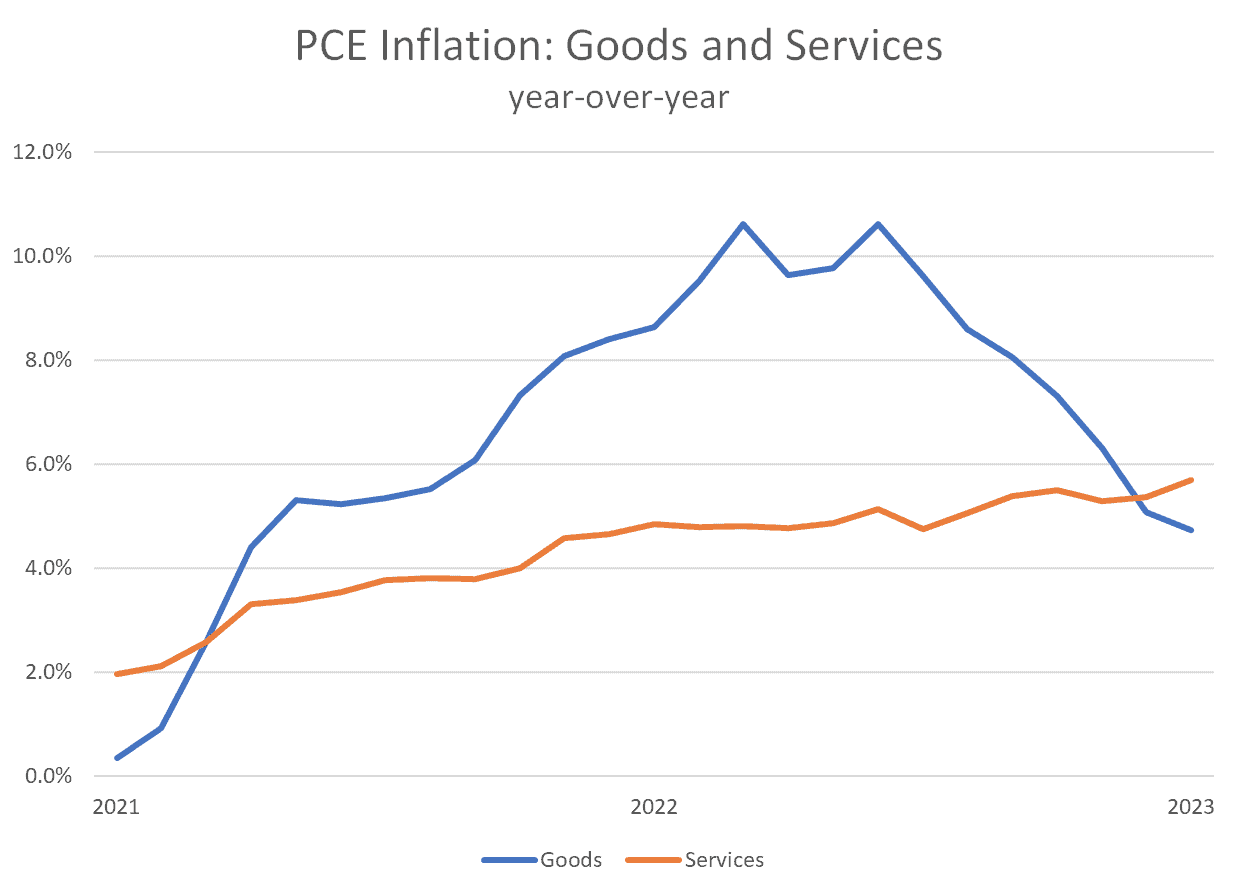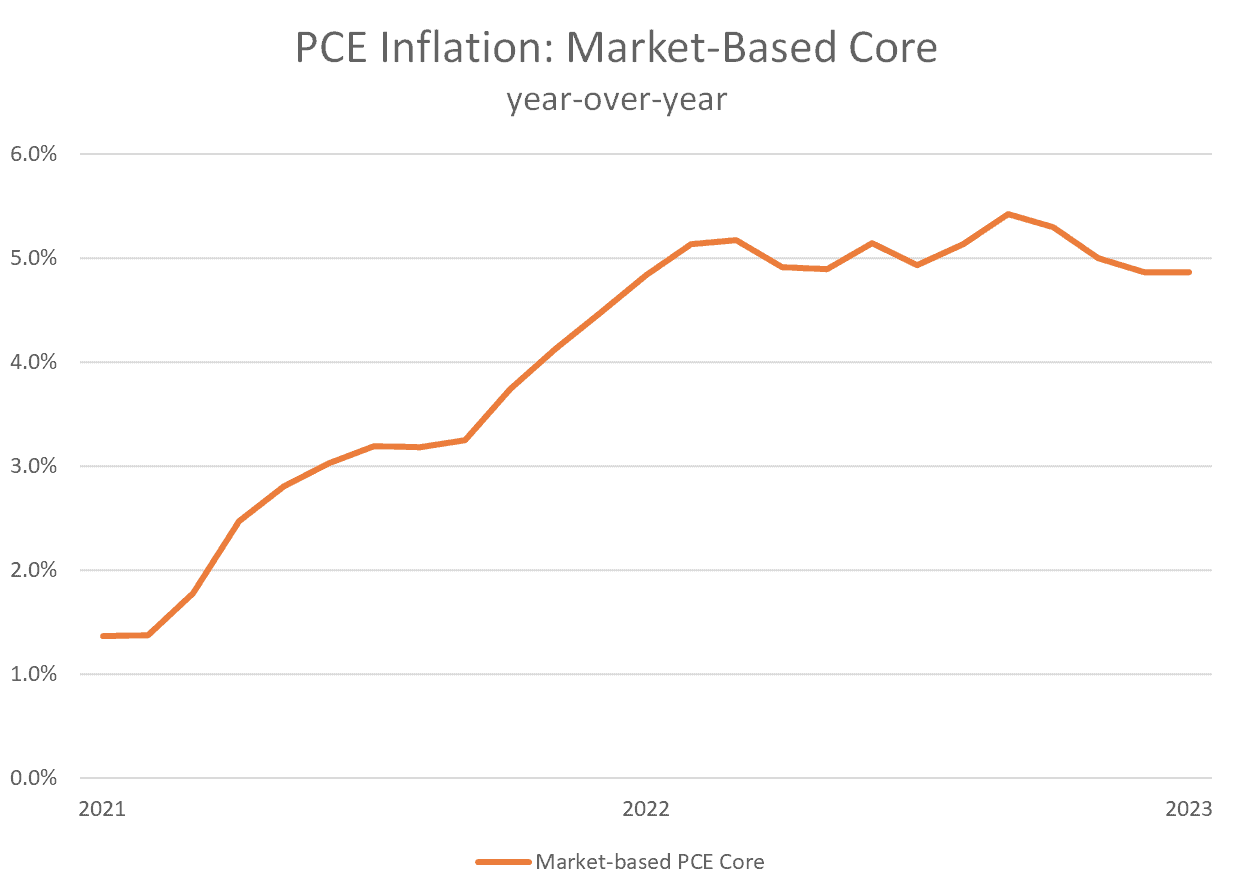The Daily Dish
February 27, 2023
Some Clarity on Inflation
Friday’s data laid to rest any notion that the Federal Reserve Board had moved too fast in, or even already had overdone, tightening financial conditions to fight inflation. The data in question are the January price index for personal consumption expenditures (PCE) produced by the Bureau of Economic Analysis. The top-line inflation measure jumped to a 7.7 percent annual rate, up from 2.4 percent in December. This caused the year-over-year rate of inflation from January 2022 to come in at 5.4 percent, a tick up from 5.3 percent the month before. So clearly, inflation is far from its 2 percent target and is not dropping rapidly. But some of the details are even more interesting.
As shown in the graph below, there has been real progress in the battle against goods-price inflation. After peaking at 10.6 percent early in 2022, it has fallen to 4.7 percent and appears to be on a steady downward trajectory. Doubtless the Fed’s efforts have been aided by the ebbing of pandemic interference in supply chains, which are much more significant in goods than services. Indeed, the rise in the Fed’s policy rate since early 2022 has put no dent in service inflation. It has risen steadily beginning in early 2021 to reach 5.7 percent in the most recent data.
There is a second perspective on the Fed’s lack of progress. In the next graph, the focus is on the core (non-food, non-energy) PCE price index based only on observed market transactions (as opposed to imputing some of the unobserved prices). This series shows the rise during 2021 to 5.2 percent in early 2022. Since then, market-based core inflation has simply remained stubbornly elevated.
The upshot is to reinforce the simple facts that the Fed is far from done raising rates, inflation will not return to its 2 percent target quickly, and that a sustained regime of rate increases elevates the risk of a recession.
Fact of the Day
Cumulatively, from 2013 through 2021, the economy lost at least 7 billion hours of work due to the opioid epidemic, nearly 5.7 billion from lost male workers and over 1.3 billion from lost female workers.












